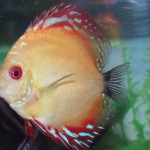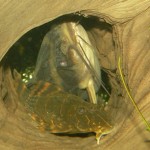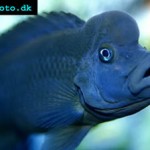There is no person that can deny that Koi fish are beautiful. They provide a welcome addition to your landscaping and the beauty of the fish is determined by most, of their color. What you may not realize is that there is significant differences in Koi fish color meaning. Patterns also can help to determine the desirability of the fish. The color of the fish and the patterning and scale orientation do a lot to determine the value of the fish. The more color on the fish, the higher the price in most circumstances. Most of the fish have similar Koi fish color meanings. They vary from good relationships to wealth in one form or another.
While many people will choose the Koi on the Koi color meaning, there are those that choose the fish for only the beauty they may add to their Koi pond.
The Yamabuki Koi fish color meaning, or gold fish, is representative of prosperity and obviously, gold. Whether the owners of these beautiful gold fish are sending a message that they have achieved that wealth or are hoping the fish will bring a winning lottery ticket into their future is the mystery. It all depends on personal choice. Do not choose a Yamabuki that appears too yellow. This type of Koi may develop red spots on their heads. The gold/yellow Koi are popular with people with ponds that tend to be under filtered.
Ogon are gray/platinum colored and are also a representation of the fulfillment of wealth. This wealth is specifically achieved by success in business. This can be the hope for a successful business or success that has already been achieved. The ogon Koi is always metallic and easy to see in green or clear ponds. They are singular in color but always metallic. Choosing the color will depend on what Koi fish color meaning you are seeking or what you are desiring to add to your pond.
The mysterious and striking looking black and white fish is named the Kumonryu. This is the name of the dragon of transformation in Japan. The jet black resembles billowing clouds against a stark white sky. This scaleless variety of Koi changes pattern during the year. In the winter they are primarily black with the white appearing in the spring and summer.
Ochiba Koi are a light blue/gray color with highlights of copper, yellow or possible bronze. Some will say that they resemble autumn leaves floating on the water in your pond. The literal translation is “fallen leaves.” This is a very large Koi and ranges up to 27-29 inches in length.
Karasugoi are solid black. When you begin your shopping expedition for a karasugoi, be sure you choose one that is deep black and not gray. Examine the fish for bad scales or scars. Both of these will distract from the appearance of the Koi. The translation of karasugoi is “the crow” or black with no white.
Solid yellow, non-metallic, are called kigoi. The most valuable of the kigoi have very red eyes which gives them a rather eerie look.
Goshiki Koi are a crass of the taisho sonshoku and the asagi. This is theory and has not been firmly determined. They used to be included in with the kawarimono Koi. The consistency of recent production have earned them a label all their own. They have red markings similar to the Kohaku but not judged as strongly. There may be scales present on the red markings. Meshing will be strictly on the white.
Bekko Koi can be red, white or yellow. There are black markings on their body as well which add to their appeal. The literal translation of Bekko is tortoise shell. Again it must be said that colors vary and combinations can make the translations of Koi fish color meanings less distinct.
The Tancho is distinguished by a red patch on the head. They are not an independent form of Koi and can be bred from several varieties. Their patch will only appear in the region of the head and they cannot be produced in bulk. The most common are the all white with tancho. The tancho goshiki is a Koi of five colors that have a tancho. The contrast of the sparkling white makes the appearance of the tancho distinctive and will increase the value of the fish.
The Koi fish color meaning can be interpreted with the literal Japanese translation or you can take the initiative to label them with your choice of meanings that will suit your particular pond.
















